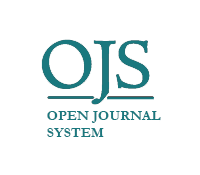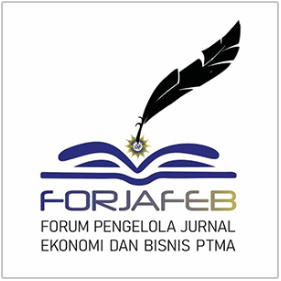The Impact of The Investment Opportunity Set on Dividends: An Effect of Sustainable Growth Rate
DOI:
https://doi.org/10.22219/jrak.v14i4.37803Keywords:
Dividends Per Share, Investment Opportunity Set, Sustainable Growth RateAbstract
Purpose: This research aims to examine dividends per share as a consequence of the investment opportunity set. Furthermore, research observes that, at a high level of sustainable development, the influence of investment opportunities on dividends per share changes.
Methodology/approach: The sample consists of public companies from 1995 to 2023 in six ASEAN countries. A panel data set consisting of 65,239 observations was tested using variance-covariance error (VCE-Robust).
Findings: The results of this research conclude that dividend per share is a consequence of the investment opportunity set. At a high level of sustainable development, the influence of investment opportunities on dividends per share changes negatively.
Practical implications: When SGR is high, companies may be better off retaining earnings to finance investments rather than distributing them as dividends, because investments are more important for supporting long-term growth.
Originality/value: The findings reveal novel dynamics, including the counterintuitive negative impact of high SGR on this relationship. The study provides context-specific insights that extend theoretical frameworks and offer actionable strategies for corporate decision-makers in emerging economies.
Downloads
References
Abor, J., & Bokpin, G. A. (2010). Investment opportunities, corporate finance, and dividend payout policy: Evidence from emerging markets. Studies in Economics and Finance, 27(3), 180–194. https://doi.org/10.1108/10867371011060018
Akbar, S., Khan, S., Haq, Z. U., & Amin, M. Y. (2023). Dividend policy and shareholders’ wealth. A comparative analysis of Shariah-compliant and noncompliant nonfinancial firms in Pakistan. Journal of Islamic Accounting and Business Research. https://doi.org/10.1108/JIABR-01-2023-0007
Andaswari, S., Setyadi, D., Paminto, A., & Defung, F. (2019). The company size as a moderating variable for the effect of investment opportunity set, debt policy, profitability, dividend policy and ownership structure on the value of construction companies listed on the Indonesia stock exchange. International Journal of Scientific and Technology Research, 8(9), 2356–2362. https://www.scopus.com/inward/record.uri?eid=2-s2.0-85075029104&partnerID=40&md5=e448ddc387c794105810adfce6d2f5be
Bosch-Badia, M. T., Montllor-Serrats, J., & Tarrazon-Rodon, M. A. (2014). Capital budgeting and shareholders value: Investment projects versus courses of action. Engineering Economist, 59(3), 207–230. https://doi.org/10.1080/0013791X.2014.910719
Brav, A., Graham, J. R., Harvey, C. R., & Michaely, R. (2005). Payout policy in the 21st century. Journal of Financial Economics, 77(3), 483–527. https://doi.org/10.1016/j.jfineco.2004.07.004
Chen, Gupta, M. C., Lee, A. C., & Lee, C.-F. (2013). Sustainable growth rate, optimal growth rate, and optimal payout ratio: A joint optimization approach. Journal of Banking and Finance, 37(4), 1205–1222. https://doi.org/10.1016/j.jbankfin.2012.11.019
Handriani, E., & Robiyanto, R. (2018). Investment opportunity and industrial growth in Indonesia. International Journal of Business and Society, 19(2), 295–312. https://www.scopus.com/inward/record.uri?eid=2-s2.0-85052853418&partnerID=40&md5=3f1dfc7a415c092bd4860628a1af1065
Higgins, C. R. (1977). How Much Growth Can a Firm Afford? Financial Management, 6(3), 7–16. http://dx.doi.org/10.1016/j.jaci.2012.05.050
Kengatharan, L., & Ford, J. S. D. (2021). Dividend policy and share price volatility: Evidence from listed non-financial firms in Sri Lanka. International Journal of Business and Society, 22(1), 227–239. https://doi.org/10.33736/IJBS.3172.2021
Khan, K. I., Aamir, M., Qayyum, A., Nasir, A., & Khan, M. I. (2011). Can dividend decisions affect the stock prices: A case of dividend paying companies of KSE. International Research Journal of Finance and Economics, 76, 67–74. https://www.scopus.com/inward/record.uri?eid=2-s2.0-81355142279&partnerID=40&md5=607c4e6f70ed2848b5a29b8232f216d9
Kheirollahi, F., Abbaszadeh, A., & Haghparast, R. (2015). The impact of corporate governance on the relationship between investment opportunities and dividened policy in Tehran stock exchange. Advances in Environmental Biology, 9(3), 704–709. https://www.scopus.com/inward/record.uri?eid=2-s2.0-85063841703&partnerID=40&md5=4c9a427f8427345e922dfc323c1f7a9b
Nor, F. M., Ramli, N. A., Marzuki, A., & Rahim, N. (2020). Determinants and stability of dividend payment: The case of Malaysian public-listed shariah-compliant firms. Jurnal Pengurusan, 60. https://doi.org/10.17576/pengurusan-2020-60-07
Nyandeni, A., Marais, A., & McCullough, K. (2024). Dividend announcements, share returns and trading volumes on the Johannesburg Stock Exchange. Afro-Asian Journal of Finance and Accounting, 14(5), 735–756. https://doi.org/10.1504/AAJFA.2024.140934
Ofori-Sasu, D., Abor, J. Y., & Osei, A. K. (2017). Dividend Policy and Shareholders’ Value: Evidence from Listed Companies in Ghana. African Development Review, 29(2), 293–304. https://doi.org/10.1111/1467-8268.12257
Sailaja, V. N., & Sucharitha, K. (2018). A study on impact of dividend announcements on stock prices in india. Journal of Advanced Research in Dynamical and Control Systems, 10(8 Special Issue), 188–191. https://www.scopus.com/inward/record.uri?eid=2-s2.0-85050632289&partnerID=40&md5=54352599e308c55bc1279ba4d5b03307
Shaban, O. S., Yassin, M. M., Al-hawatmah, Z., Amoush, A. H., & Hamad, M. J. (2023). Maximizing Financial Performance and Sustainability Through Innovative Dividend Policies: Evidence from Emerging Market. In Studies in Big Data (Vol. 136, pp. 127–137). https://doi.org/10.1007/978-3-031-42455-7_12
Sharma, D. K., Wadhwa, R., & Dhillon, L. K. (2017). Does dividend policy affect the value of firm? International Journal of Economic Research, 14(19), 445–452. https://www.scopus.com/inward/record.uri?eid=2-s2.0-85040681133&partnerID=40&md5=42259901c6bb9db5a430e45531f962a2
Singla, H. K., & Samanta, P. K. (2019). Determinants of dividend payout of construction companies: a panel data analysis. Journal of Financial Management of Property and Construction, 24(1), 19–38. https://doi.org/10.1108/JFMPC-06-2018-0030
Thirumagal, P. G., & Vasantha, S. (2016). Dividend policy on shareholders wealth-evidences from Indian pharmaceutical industry. Indian Journal of Science and Technology, 9(15). https://doi.org/10.17485/ijst/2016/v9i15/90568
Usman, B., & Lestari, H. S. (2019). Determinants of share prices on manufacturing company: Evidence in Indonesia stock exchange. International Journal of Advanced Science and Technology, 29(5), 427–436. https://www.scopus.com/inward/record.uri?eid=2-s2.0-85083852501&partnerID=40&md5=6d05c649b29951019c7d05d668007c90
Vasiu, D. E., & Ilie, L. (2018). Sustainable Growth Rate: An Analysis Regarding the Most Traded Companies on the Bucharest Stock Exchange. Springer Proceedings in Business and Economics, 381–394. https://doi.org/10.1007/978-3-319-71876-7_34
Published
Issue
Section
License
Copyright (c) 2024 junaidi junaidi, Noorlailie Soewarno, Isnalita Isnalita

This work is licensed under a Creative Commons Attribution-NonCommercial-ShareAlike 4.0 International License.

Jurnal Reviu Akuntansi dan Keuangan is licensed under a Creative Commons Attribution-NonCommercial-ShareAlike 4.0 International License.
Authors who publish with this journal agree to the following terms:
- Authors retain copyright and grant the journal right of first publication with the work simultaneously licensed under a Creative Commons Attribution-NonCommercial-ShareAlike 4.0 International License that allows others to share the work with an acknowledgement of the work's authorship and initial publication in this journal.
- Authors are able to enter into separate, additional contractual arrangements for the non-exclusive distribution of the journal's published version of the work (e.g., post it to an institutional repository or publish it in a book), with an acknowledgement of its initial publication in this journal.
- Authors are permitted and encouraged to post their work online (e.g., in institutional repositories or on their website) prior to and during the submission process, as it can lead to productive exchanges, as well as earlier and greater citation of published work (See The Effect of Open Access).










